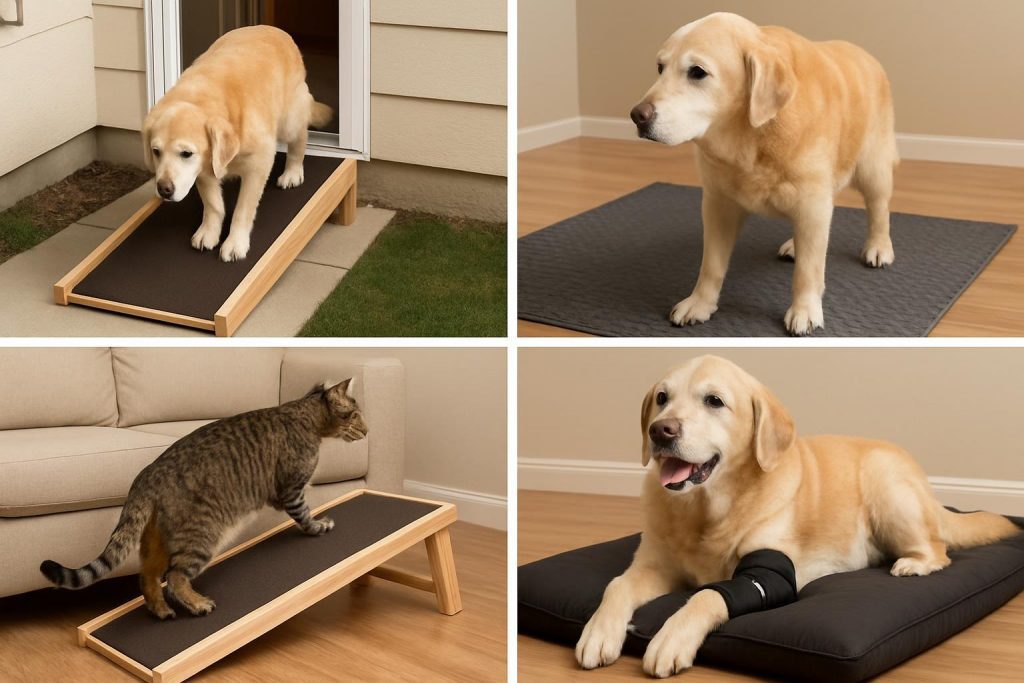Physical Address
304 North Cardinal St.
Dorchester Center, MA 02124
Physical Address
304 North Cardinal St.
Dorchester Center, MA 02124

Although aging affects pets in many ways, mobility loss is frequently the most obvious and worrying for pet owners. Even basic actions like going up stairs or jumping onto the sofa can be challenging for arthritis, joint stiffness, and muscle weakness. There are luckily senior pet mobility do-it-yourself fixes to simplify life without exhausting one’s finances. From orthopedic bedding to homemade ramps, little modifications at home can drastically increase your aging friend’s independence and comfort.
Cartilage wears down with age, leading to painful, stiff joints and reduced movement.
As pets move less, muscle tone decreases, making mobility problems worse.
Conditions like degenerative myelopathy in dogs or neuropathy in cats can affect coordination and balance.
Extra pounds add pressure on already weakened joints, accelerating decline.
Always consult your vet to rule out serious conditions before starting DIY solutions.
At-home hacks are ideal for ongoing support, mild-to-moderate mobility issues, or as complements to professional treatment.
Use a folded towel as a makeshift sling to help pets stand or walk.
Fill a wooden frame with memory foam or layered blankets for joint support.
Rice-filled socks (microwaved) or gel packs wrapped in towels provide soothing relief.
Apply pet-safe grip wax or fit socks with rubber soles to prevent slipping.
1. What’s the easiest DIY mobility solution for senior pets?
Slip-proof rugs or mats they’re affordable, simple, and immediately effective.
2. Can DIY ramps support large dogs?
Yes, if built with sturdy materials like plywood and carpeted for traction.
3. Do cats benefit from mobility solutions, too?
Absolutely cat ramps, soft steps, and non-slip mats help senior cats stay active.
4. Should I stop exercising my senior pet with arthritis?
No. Gentle, controlled exercise keeps muscles strong and joints flexible.
5. What supplements are best for mobility support?
Glucosamine, chondroitin, and omega-3s are widely recommended. Always consult your vet before starting.
6. How can I tell if my pet is in too much pain for DIY solutions alone?
If mobility doesn’t improve or worsens, or if your pet cries or avoids movement, seek veterinary care immediately.
Aging need not entail a decline of autonomy. Using these DIY senior pet mobility ideas, you can build a secure, loving home surroundings that supports your furry friend stay comfortable and active. Little changes in your pet’s quality of life from ramps and orthopedic bedding to light exercise and nutritional help can have a major effect.
🔗 For more resources on senior pet care, visit the American Veterinary Medical Association (AVMA).